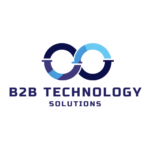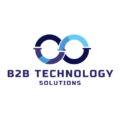Unveiling the Power of Intent Marketing: The Crucial Role of Intent Data
Title: Unveiling the Power of Intent Marketing: The Crucial Role of Intent Data
Introduction:
In today’s fast-paced digital landscape, understanding your audience’s intent is the key to unlocking successful marketing strategies. Enter intent marketing, a dynamic approach that revolves around leveraging intent data to tailor your marketing efforts to meet the needs and expectations of your potential customers. In this blog post, we’ll explore the world of intent marketing and delve into the importance of intent data in driving business success.
What is Intent Marketing?
Intent marketing is a strategy that focuses on identifying and catering to the specific intentions of potential customers. It goes beyond demographics and general behaviors, honing in on signals that indicate a heightened likelihood of making a purchase or engaging with a brand. At the heart of intent marketing lies the invaluable resource: intent data.
The Role of Intent Data: A Game-Changer for Marketers
1. Understanding First-Party Intent Data:
First-party intent data is collected directly from your own digital properties. This includes website interactions, email engagements, and other touchpoints where customers interact with your brand. Monitoring page visits, time spent on specific content, and form submissions provides crucial insights into the interests and preferences of your audience.
2. Harvesting Insights from Third-Party Intent Data:
Third-party intent data broadens the scope by tapping into external sources. This could involve monitoring industry publications, social media activities, and content consumption on other websites. Integrating third-party signals with your first-party data enriches your understanding of the overall landscape and helps identify potential customers who might not be directly engaging with your brand.
The Importance of Intent Data in Marketing:
1. Personalization at Scale:
Intent data empowers marketers to personalize their messaging at scale. By understanding the specific needs and interests of potential customers, you can create targeted content and campaigns that resonate on a deeper level, increasing the likelihood of conversion.
2. Enhanced Lead Scoring:
Lead scoring becomes more accurate and efficient with the incorporation of intent data. Prioritizing leads based on their level of engagement and demonstrated intent ensures that your sales team focuses its efforts on the prospects most likely to convert, leading to a more streamlined and effective sales process.
3. Optimizing Content Strategy:
Intent data guides content creation and optimization. Analyzing what your audience actively seeks allows you to develop content that aligns with their interests. This not only enhances engagement but also establishes your brand as a valuable resource in your industry.
4. Strategic Sales Outreach:
Sales teams armed with intent data can make more informed decisions about when and how to approach potential customers. By targeting leads showing active interest, the outreach becomes more strategic and personalized, fostering a higher chance of successful conversions.
Conclusion: Harnessing the Power of Intent Marketing
In a world where customer expectations are evolving rapidly, intent marketing fueled by intent data emerges as a powerful strategy. By understanding and responding to the unique intentions of your audience, you can create a more personalized and impactful marketing experience. Embrace intent marketing, leverage the insights from intent data, and watch as your business connects with its audience on a whole new level. The future of marketing is intent-driven, and the time to embrace it is now.

A global leader in technology marketing and demand creation, B2B Technology Solutions offers a comprehensive range of performance-driven B2B lead generation solutions, including intent and install-based targeting, account-based marketing, and content marketing.
Quick Links
Connect
- contact@b2btechnologysolutions.com
- +1 973-968-5062

